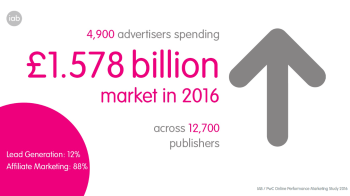We can’t hear you! Engaging your silent video viewers
Jennifer Bunting - Group Manager, EMEA & LATAM LMS Product Marketing, LinkedIn
With the majority of videos on LinkedIn watched on mute, how can advertisers leverage ‘sound-off’ viewing to their advantage?
Most performance metrics for video advertising centre on views. Who is watching and for how long? However, hidden among the views, View-through Rate (VTR) and Completion Rate, there’s a key point that’s rarely mentioned – most video in a social media newsfeed is viewed with the sound off. Your audience may be watching, but most of the time they’re not listening. It’s a data point that should really be driving your creative development.
Audio can play a pivotal role in online video, albeit one that can be nuanced and requires careful consideration. When audiences lean into content, soundtrack and sound quality become very important – and this is particularly true of live video. However, if your content is being discovered on social media, people won’t be turning the sound on just to hear what you have to say. On LinkedIn, 79% of videos are watched on mute and that number is even higher on other social platforms.
The usual banalities like “use silent storytelling techniques” won’t cut it as a creative strategy for this environment. They don’t provide enough clear direction or spark inspiration. However, analysing the characteristics of the most effective video in social media feeds does. After watching over 269 of the top performing videos on LinkedIn last year out of 38,000 lines of creative, as part of the largest analysis into B2B video advertising in EMEA, I paid special attention to what brands were doing with – and without – their audio.
Here’s what we observed from the top performers:
The different roles of subtitles and text overlays
The most obvious way to communicate a message visually is through text appearing on screen. However, it’s important to distinguish between the different forms this text can take – and the different ways that audiences respond to them.
Subtitles are table stakes for any video featuring a speaker or anchored by a voiceover. One of the most surprising insights to come from analysing video content is how often this best practice is still ignored.
Subtitles have value whenever a soundtrack is significant, not just when a narrator is speaking. This gives them the potential for a more creative role. The Spanish bank Acconia ran a campaign with emotive visuals highlighting the environmental impact of investment decisions. There was no narration, but subtitling the lyrics of Mad World by Tears for Fears proved extremely powerful – more so, I’d argue, for inviting viewers to consider them in silence.
People are happy to read subtitles quickly, because they understand that they are keeping up with a speaker – and that this is a trade-off that results from watching on mute. Text overlays are different. It’s part of the video experience you’ve designed. Audiences expect to be able to absorb it comfortably, at a relaxed pace, without having to do too much work. When videos turn into animated PowerPoint presentations, performance suffers.
Effective video overlays stick to a maximum of 14 words per scene, spread over a maximum of three lines (but preferably two). They make every word count, and they prioritise legibility by using drop shadows or setting copy on semi-transparent panels. The more words, the longer the text must stay on screen.
Perfect your shot selection with storyboards
Silent viewing makes shot selection and storyboarding critical. The more you can get from the performance of actors and speakers, the more visual assets you have to play with. Close-ups elicit higher engagement and enable performers to express emotion, so plan carefully around when and how to include them. Showing how someone is feeling is far more powerful then telling audiences how they’re feeling – and it means you can save your use of on-screen text for your wider message.
Close-ups proved particularly effective for Essity, a personal paper products company, which dramatised parents having uncomfortable discussions with their kids without the need for any dialogue. The pharmaceutical brand Bayer delivered powerful emotional impact by showing the experience of a grandfather who cannot see his grandchild, rather than narrating it.
Moving things forward with montages
As any 80s movie fan can tell you, a well-worked montage is a great technique for telling a visual story with pace and “stickiness.” And if you’re working with stock footage, it’s a great opportunity to give it your own distinctive, creative stamp. For Solidworks, a montage showing how its 3D software tools could be applied turned potentially dry subject matter into something visually compelling.
Closing thoughts
As marketers, we know that watching online video is a very different experience from watching TV – but all too often we ignore the most critical difference of all. Planning for silent viewing experiences both acknowledges the reality of online video consumption and acts as a spur for creativity. It delivers better audience experiences and more effective marketing. However, it can only do so when it’s highlighted as an essential creative consideration from the start.

Guide to Digital Innovation 2020
Introducing our Guide to Digital Innovation 2020. From shoppable video to gaming experiences, the new guide gives first-hand insight from 36 IAB UK members on the most innovative digital ad solutions and how brands can effectively harness them.
Written by
Jennifer Bunting
Topics
Related content
Unlocking the Creative Potential of Virtual Gaming Worlds
Learn moreThe Rise of Short-Form Video & the Gen Z Social Revolution
Learn moreBrand considerations for digital marketing in APAC
Learn moreIAB / PWC Online Performance Marketing Study (OPM) 2016
Learn more
Fast forward to 2030 with Futurescape
An in-depth exploration of the attitudes, innovations and media shifts that will shape the years ahead and redefine how we advertise by the turn of the decade



